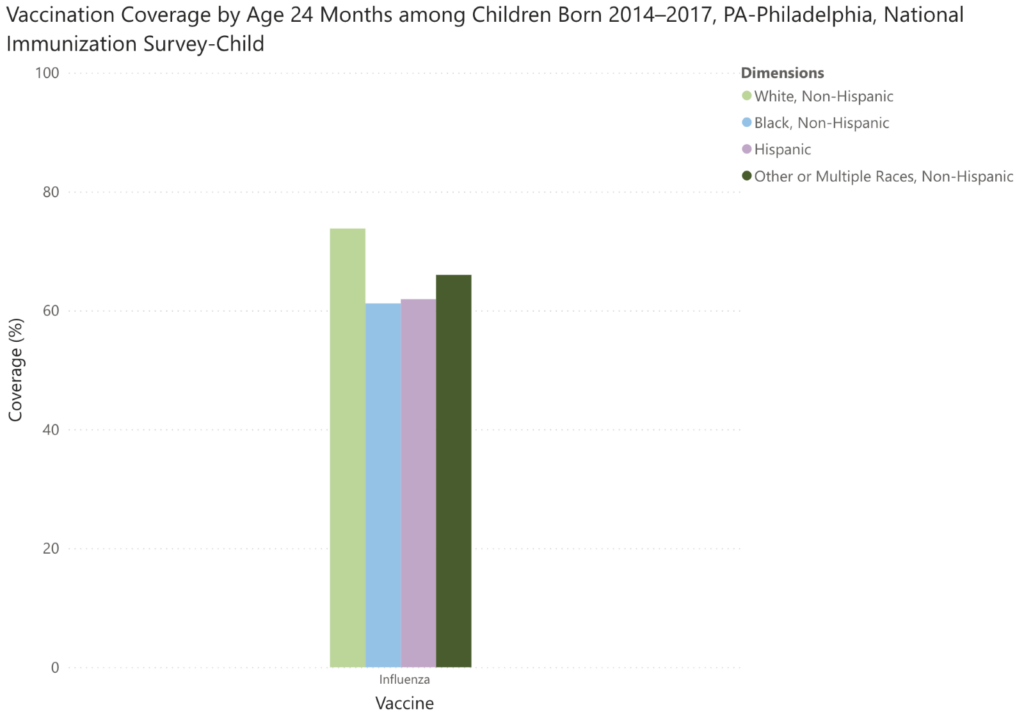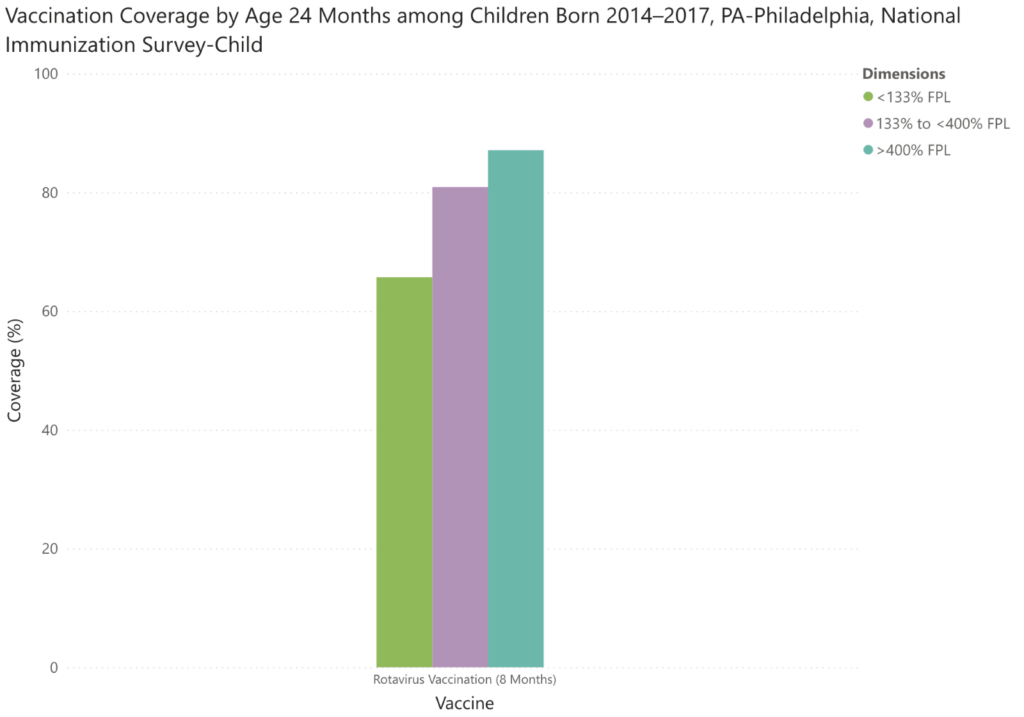28 Apr 2023 Protecting Infants from Vaccine Preventable Diseases
Protecting Infants from Vaccine Preventable Diseases
National Infant Immunizations Week is April 24 to April 30 this year, serving as a reminder to protect infants in Philadelphia from vaccine preventable diseases.
Over the years, immunization providers in the United States have reached major milestones in protecting infants through vaccines. Through immunization, we can now protect infants and children from 15 vaccine-preventable diseases before age 2.
Schedule and Updates
View the CDC immunization schedule for children and adolescents.
There are important updates to COVID-19 immunization recommendations for infants:
Previously unvaccinated: Children 6 months through 5 years of age who are unvaccinated may receive a two-dose series of the Moderna bivalent vaccine (6 months through 5 years of age) OR a three-dose series of the Pfizer-BioNTech bivalent vaccine (6 months through 4 years of age).
Previously vaccinated: Children 6 months through 4 years who previously completed their full two- or three-dose monovalent Moderna/Pfizer COVID-19 primary vaccination series are now recommended to receive a dose of Moderna/Pfizer’s updated (bivalent) COVID-19 vaccine.
Children 6 months through 5 years of age who have received one, two, or three doses of a monovalent COVID-19 vaccine should receive a bivalent vaccine, but the number of doses that they receive will depend on the vaccine and their vaccination history.
Healthy People 2030
Philadelphia immunization providers have made measurable progress in infant immunization coverage. However, immunization rates fell during the COVID-19 pandemic, and have not yet returned to pre-pandemic levels.
In Philadelphia, vaccination coverage with 4 doses of the DTaP vaccine in children between 0 and 2 years old was around 84% in 2021.
Healthy People 2030 objective IID-06 is: Increase the coverage level of 4 doses of the DTaP vaccine in children by age 2 years. The target for this objective is 90%.
Philadelphia providers have an opportunity to increase immunization coverage for this metric to reach or exceed the target by 2030.
Local Data
In addition to increasing DTaP vaccine coverage, Philadelphia providers can improve infant immunization coverage by focusing on addressing disparities.
Local data shows that influenza vaccination coverage among infants was lowest at 55.8% among the lowest income group in the data set, as compared with 84.3% among the highest income group in the set. In addition, influenza vaccination coverage was 61.2% among Black infants and 61.9% among Hispanic infants, as compared with 73.8% among white infants.

Rotavirus coverage was 65.7% among the lowest income group, as compared with 87.1% among the highest income group. Rotavirus coverage was 70.3% among Black infants and 69.8% among Hispanic infants, as compared with 84.1% among white infants.

Preexisting social determinants of health such as economic burden, lack of transportation, and lower rate of insurance coverage contribute to these disparities. However, immunization providers can use multiple strategies to close the gaps in vaccination coverage.
Strategies to increase vaccination rates among Black, Hispanic, and American Indian/Alaska Native communities include strongly recommending flu vaccination and making culturally appropriate vaccine recommendations (e.g. using materials with images representative of those in the community, addressing community-specific concerns and misinformation, and using the predominant language spoken in the community, such as Spanish).
Providers can also work toward increasing vaccination coverage among low-income populations by using evidence-based strategies such as immunization reminders, standing orders to provide vaccination whenever appropriate, and immunization information systems. Additionally, review immunization schedules with parents at the child’s first visit to show vaccines that are upcoming.
Resources
Improving communication between providers and patients is crucial to increasing immunization coverage among infants in your office.
Download and print coloring sheets for National Infant Immunizations Week.
Talk with parents and caregivers about their infant’s missing immunizations. Continue the conversation and offer educational resources for caregivers who are hesitant.


